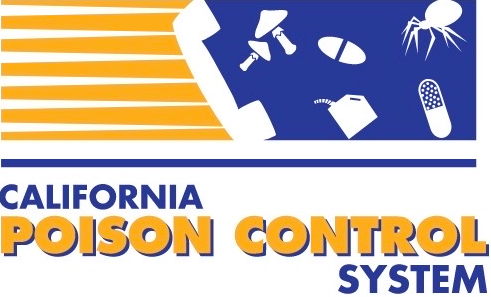Introduction
On March 25, 2016 the Sacramento County Division of Public Health released a drug overdose health alert entitled Fentanyl-Contaminated Street Norco. This report was in response to 12 cases of poisoning from “street” Norco thought to contain fentanyl over the previous 48 hours. Legitimate Norco tablets contain a combination of acetaminophen and hydrocodone in various amounts. Hydrocodone is considered a semi-synthetic opioid in that it is synthesized by modification of an opiate (naturally occurring compounds isolated from the Papaver somniferum poppy plant such as morphine, codeine, heroin, and opium). Fentanyl is termed a synthetic opioid as it is not derived from naturally occurring sources like the aforementioned opiates. As described above, both hydrocodone and fentanyl are opioids meaning that they are agonists at various opioid receptors. Quantifying a true difference in potency can be challenging given the multiple variables that go into such a determination including receptor affinity, receptor activation, and lipophilicity. Studies have shown that fentanyl binds the mu opioid receptor with about 30 times the affinity of hydrocodone. Perhaps the best way to understand the difference in potency is through differences in therapeutic dosing ranges with fentanyl being dosed in the microgram (mg) range while hydrocodone is dosed in the milligram (mg) range. The concern of this ~ 1000-fold dosing difference being unknowingly ingesting fentanyl contaminated “street” Norco and developing more pronounced dangerous effects than anticipated such as central nervous system (CNS) and respiratory depression.
Case presentation
A 23-year-old male was found unresponsive in his bedroom by his mother who called emergency medical services (EMS). Paramedics arrived on scene and found the patient unarousable to pain, respiratory rate 4 breaths per minute, pulse oximetry 65-75% well as pinpoint pupils. Per their protocol naloxone 2 mg was administered intravenously with improvement in the patient’s CNS and respiratory depression and transported to the emergency department (ED). In the ED, the patient is somnolent but opens eyes to voice, follows commands, and is protecting his airway. Vitals are heart rate 65, blood pressure 115/75 mm Hg, respiratory rate 12, O2 sat 93%, and afebrile. Basic laboratory testing including a basic metabolic panel and complete blood count are unremarkable. Ethanol and acetaminophen are undetectable and a urine drug screen is positive only for opiates. With prompting the patient is able to tell you that he regularly abuses “Norco” but that he only took 1 tablet prior to his presentation which is less than his usual dose. On further questioning he does mention that he just bought a new supply of Norco on the streets from an unfamiliar dealer. Analysis of the patient’s blood with liquid chromatography/mass spectrometry (LC/MS) identified fentanyl and hydrocodone. Analysis of one of the “Norco” tablets provided by the patient’s mother revealed fentanyl but hydrocodone was not detected.
Questions
- What is the difference between an opiate and an opioid?
- What are the limitations of the urine drug screen in diagnosing fentanyl intoxication?
Epidemiology
In the 2 weeks following the March 25th health alert Vo et al reported another seven patients who had ingested illicit or “street” Norco and had presented to multiple Bay Area hospitals with “various signs and symptoms of opioid intoxication.” Serum from these 7 patients were analyzed using LC/MS and fentanyl as detected ranging from 1.6 to 10.1 ng/ml with analgesic therapeutic serum levels being reported between 0.6 to 3 ng/ml. An illicit Norco tablet obtained from one of the patients in this case series was analyzed, again by LC/MS, and contained 3.5 mg of fentanyl, 2.3 mg of promethazine, 39.2 mg of acetaminophen, and trace amounts of cocaine. Fentanyl is not currently manufactured as an oral tablet. Additionally, the imprint on the counterfeit tablet was similar to that seen on legitimately manufactured Norco.
This is not the first report of counterfeit tablets containing fentanyl. Arens et al reported a series of ten patients including two deaths after ingestion of counterfeit Xanax tablets containing fentanyl reported to the California Poison Control System (CPCS) between October 10, and December 31, 2015. In addition to the two deaths, complications in this case series included CNS depression requiring intubation, rhabdomyolysis, compression neuropathy, and cardiac arrest with subsequent survival. Tablets were obtained from a patient and analyzed by LC/MS were found to contain fentanyl as well etizolam, a novel benzodiazepine. Serum and urine from the patients in this case series was also analyzed. All but one was positive for fentanyl and the single patient with no fentanyl did have etizolam present in their serum.
More recently the Drug Enforcement Agency (DEA) released a newsletter on April 15, 2016 detailing the February 2016 arrest of an individual at the Otay Mesa Mexico/United States border crossing near San Diego, CA. This individual was smuggling 1,183 tablets labeled as oxycodone that were later confirmed to contain fentanyl. In addition, he was found to have 5.4 grams of powdered substance that was also confirmed to be fentanyl.
Pathophysiology
An opioid is any agent that binds and causes agonism at opioid receptors. Opiates are naturally occurring compounds derived from the poppy plant and include morphine, codeine, and thebaine. Both fentanyl and hydrocodone are opioids and are agonists opioid receptors. Mu opioid receptor agonism, one of a handful of opioid receptor subtypes, causes many of the very familiar effects of opioids including analgesia, constipation, respiratory depression, and the euphoria many opioid abusers are seeking.
The potency of fentanyl per unit dosing is much greater compared to hydrocodone and results in more pronounced CNS and respiratory depression when taken in similar doses. This likely contributed to the profound CNS and respiratory depression noted in these cases. In addition, typical starting analgesic doses of fentanyl is 200 mg when taken as oral transmucosal lozenges and the counterfeit Norco tabs in question contained 3.5 mg or 3,500 mg of fentanyl. When swallowed the large dose is somewhat mitigated by first-pass effect and resulting in about 32% bioavailability. Even when taken into account, this reduced bioavailability would still result in an approximate dose of 1.1 mg which is still quite significant. In summary, not only was fentanyl substituted for hydrocodone but it was done so in markedly high doses. Taken together this resulted in dangerous levels of respiratory and CNS depression causing significant morbidity and even mortality in some of these cases.
Another factor in these cases is the promethazine and etizolam in the Norco and Xanax tabs respectively. Promethazine belongs to the phenothiazine drug class and antagonizes histamine, muscarinic, and dopamine receptors. It has been used as an antipsychotic as well as for the treatment of nausea. Etizolam, a theinodiazepine, is structurally distinct from benzodiazepines yet pharmacologically similar in that it acts as an agonist at the gamma aminobutyric acid (GABA) A receptor. Both drugs are known to cause CNS depression and when combined with fentanyl may produce even more CNS depression due to synergistic effects.
Clinical manifestation
Diagnosis of opioid intoxication is primarily clinical and based on recognizing the typical opioid toxidrome. This toxidrome includes CNS depression, miosis, decreased GI motility, and various levels of respiratory depression depending on amount of opioid ingested and individual patient tolerance. Hypotension can be seen in severe poisonings. Occasionally, opioid intoxicated patients may develop non-cardiogenic pulmonary edema resulting in profound dyspnea and hypoxia.
Diagnosis
Urine drug screens (UDS) are often ordered on suspected overdose patients but there are important caveats to keep in mind. Typical UDS used by hospital laboratories are immunoassays targeted to detect opiates and have variable sensitivities in detecting opioids like hydrocodone. A positive result for opiates only indicates exposure and does not indicate acute intoxication. The clinical picture, as described above, should be used to assess for acute intoxication. Additionally, UDS seldom detect fentanyl and thus a negative screen does not rule out fentanyl intoxication. The reason for this is that most UDS are designed to recognize morphine and while there is cross-reactivity with many opioids, fentanyl is structurally distinct from opiates resulting in inconsistent results with many UDS. Serum and urine can be sent for analysis by LC/MS for confirmation of fentanyl exposure however these results are not available in real time to aid in acute medical management.
Treatment
As with many patients, treatment of the opioid intoxicated patient revolves around stabilization of vital functions – airway, breathing, and circulation. Airway maneuvers including jaw thrust, nasopharyngeal airways, oropharyngeal airways, and rarely intubation may be necessary. Supplemental oxygen should be provided and helps support oxygenation in the face of respiratory insufficiency. Intravenous fluid is a first line intervention for hypotension. Naloxone is an opioid receptor antagonist and can be used to reverse CNS and respiratory depression. When possible, naloxone should be administered prior to intubation or other invasive interventions. Typical dosing is typically 0.4 mg to 2 mg intravenously. There have been reports of very high doses of naloxone needed to reverse fentanyl intoxications and if suspicion is high it is reasonable to attempt up to 10 mg of naloxone.
Discussion of case questions
- What is the difference between an opiate and an opioid?
Answer: Opiates are alkaloids that exist in nature and are isolated from the opium poppy plant, Papaver somniferum. They include morphine, codeine, and thebaine. Opioids are compounds that bind opioid receptors and produce clinical effects similar to opiates.
- What are the limitations of the urine drug screen in diagnosing fentanyl intoxication?
Answer: A positive urine drug screen means that the drug in question or a metabolite of the drug is present in the urine. It can only confirm exposure but cannot be used to determine level of impairment or even acute intoxication. A second limitation is the sensitivity of UDS for fentanyl. There are numerous commercially available UDS and each is variable in sensitivity to detect fentanyl. Thus, a negative UDS does not rule out fentanyl exposure.



